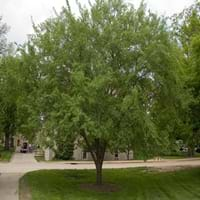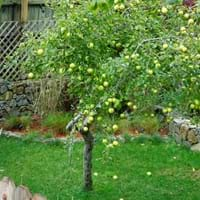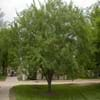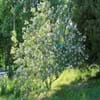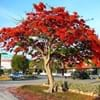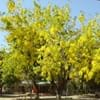Life Span
Perennial
Perennial
Type
Tree
Flowering Plants, Fruits, Trees
Origin
Eastern Asia
Eastern Europe, Southern Europe, Russia/Siberia, Southern Asia, Western Asia
Types
Ulmus parvifolia 'Emer II', Ulmus parvifolia 'True Green'
Not avaialable
Number of Varieties
Not Available
Habitat
Woodland Garden Canopy
Hillside
USDA Hardiness Zone
5-9
5-8
Sunset Zone
3a, 3b, 4, 5, 6, 7, 8, 9, 10, 11, 12, 13, 14, 15, 16, 17, 18, 19, 20, 21, 22, 23, 24
1b, 2a, 2b, 3a, 3b, 6, 7, 8, 9, 10, 11, 14, 15, 16, 17, 18, 19, 20, 21, 22, 23, 24
Habit
Upright/Erect
Oval or Rounded
Flower Color Modifier
Bicolor
Bicolor
Fruit Color
Tan, Brown
Gold
Leaf Color in Spring
Green
Green
Leaf Color in Summer
Dark Green
Green
Leaf Color in Fall
Yellow, Red, Green
Green
Leaf Color in Winter
Not Available
Light Green
Leaf Shape
Elliptic, toothed
Oblong
Plant Season
Spring, Summer, Fall, Winter
Spring, Fall
Sunlight
Full Sun, Partial Sun
Full Sun, Partial Sun, Partial shade
Growth Rate
Not Available
Medium
Type of Soil
Loam, Sand
Clay, Loam
The pH of Soil
Acidic, Neutral, Alkaline
Acidic, Neutral
Soil Drainage
Well drained
Well drained
Bloom Time
Fall
Early Spring, Spring
Tolerances
Drought
Drought
Where to Plant?
Ground
Ground
How to Plant?
Seedlings
Grafting, Seedlings, Transplanting
Plant Maintenance
Medium
Medium
Watering Requirements
Average Water Needs
Medium
In Summer
Lots of watering
Lots of watering
In Spring
Moderate
Moderate
In Winter
Average Water
Average Water
Soil pH
Acidic, Neutral, Alkaline
Acidic, Neutral
Soil Type
Loam, Sand
Clay, Loam
Soil Drainage Capacity
Well drained
Well drained
Sun Exposure
Full Sun, Partial Sun
Full Sun, Partial Sun, Partial shade
Pruning
Remove damaged leaves, Remove dead branches, Remove dead leaves
Remove damaged leaves, Remove dead branches, Remove dead leaves
Fertilizers
6-12-12 or 5-10-10
All-Purpose Liquid Fertilizer
Pests and Diseases
Canker, Leaf spot, Rots, Wilts
Black rot, Leaf spot, Scab
Plant Tolerance
Drought
Drought
Flowers
Insignificant
Showy
Flower Petal Number
Single
Single
Foliage Texture
Fine
Medium
Foliage Sheen
Glossy
Matte
Allergy
Moderate Allergen
Mouth itching, Throat itching
Aesthetic Uses
Bonsai, Showy Purposes
Not Used For Aesthetic Purpose
Beauty Benefits
Not Available
Not Available
Environmental Uses
Air purification
Air purification
Medicinal Uses
Antidote, Demulcent, Diuretic, Expectorant, Febrifuge, Hypnotic
Cancer, constipation, Diabetes, Diarrhea, Dysentry, Fever, Heart problems, Tooth ache
Part of Plant Used
Fruits, Inner Bark, Leaves
Fruits
Other Uses
Can be grown in a shelter belt, Used as a thickener in soups
Used As Food, Wood is used for making furniture
Used As Indoor Plant
Yes
No
Used As Outdoor Plant
Yes
Yes
Garden Design
Container, Feature Plant, Mixed Border, Shade Trees, Street Trees, Topiary / Bonsai / Espalier
Edible, Feature Plant, Fruit / Fruit Tree, Topiary / Bonsai / Espalier
Botanical Name
ULMUS parvifolia
MALUS domestica 'Golden Delicious'
Common Name
Chinese Elm, Lacebark Elm
Apple, Golden Delicious Apple, Yellow Eating Apple
In Hindi
Lacebark Elm
Golden Delicious
In German
Lacebark Elm
Golden Delicious
In French
Lacebark Elm
Golden Delicious
In Spanish
Lacebark Elm
Golden Delicious
In Greek
Lacebark Elm
Golden Delicious
In Portuguese
Lacebark Elm
Golden Delicious
In Polish
Lacebark Elm
Jabłoń domowa 'Golden Delicious'
In Latin
Lacebark Elm
Golden Delicious
Phylum
Magnoliophyta
Magnoliophyta
Class
Magnoliopsida
Magnoliopsida
Clade
Angiosperms, Eudicots, Rosids
Angiosperms, Eudicots, Rosids
Tribe
Ulmeae
Not Available
Subfamily
Not Available
Not Available
Number of Species
Not Available
Not Available
Season and Care of Lacebark Elm and Golden Delicious
Season and care of Lacebark Elm and Golden Delicious is important to know. While considering everything about Lacebark Elm and Golden Delicious Care, growing season is an essential factor. Lacebark Elm season is Spring, Summer, Fall and Winter and Golden Delicious season is Spring, Summer, Fall and Winter. The type of soil for Lacebark Elm is Loam, Sand and for Golden Delicious is Clay, Loam while the PH of soil for Lacebark Elm is Acidic, Neutral, Alkaline and for Golden Delicious is Acidic, Neutral.
Lacebark Elm and Golden Delicious Physical Information
Lacebark Elm and Golden Delicious physical information is very important for comparison. Lacebark Elm height is 460.00 cm and width 300.00 cm whereas Golden Delicious height is 460.00 cm and width 460.00 cm. The color specification of Lacebark Elm and Golden Delicious are as follows:
Lacebark Elm flower color: Red
Lacebark Elm leaf color: Green
Golden Delicious flower color: White
- Golden Delicious leaf color: Green
Care of Lacebark Elm and Golden Delicious
Care of Lacebark Elm and Golden Delicious include pruning, fertilizers, watering etc. Lacebark Elm pruning is done Remove damaged leaves, Remove dead branches and Remove dead leaves and Golden Delicious pruning is done Remove damaged leaves, Remove dead branches and Remove dead leaves. In summer Lacebark Elm needs Lots of watering and in winter, it needs Average Water. Whereas, in summer Golden Delicious needs Lots of watering and in winter, it needs Average Water.
